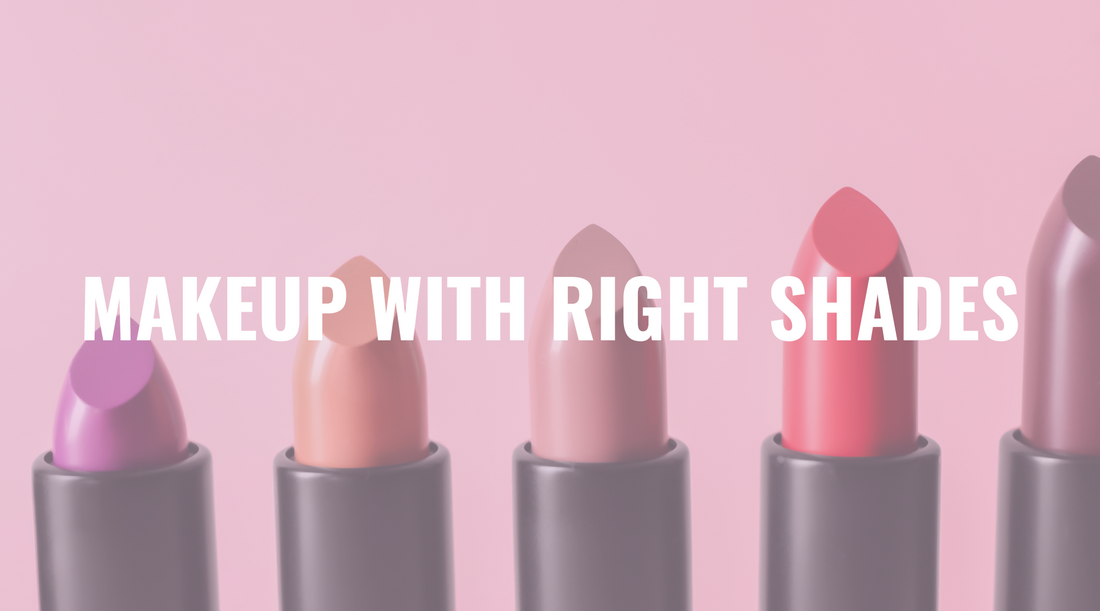
The Power of Color: Enhancing Your Makeup Routine with the Right Shades
Share
Color plays a transformative role in makeup. The shades you choose can highlight your natural features, complement your skin tone, and even reflect your mood or personality. From subtle neutrals to vibrant hues, understanding how to use color effectively can elevate your makeup routine and give you a look that feels uniquely yours. This guide explores the art of color selection and how to incorporate it into your everyday and special occasion makeup.
Understanding Your Undertone
Your skin’s undertone is the foundation of effective color selection. Undertones fall into three categories: warm, cool, and neutral. Warm undertones have a golden or yellow hue, cool undertones have pink or blue undertones, and neutral undertones are a balanced mix of both.
To determine your undertone, look at the veins on your wrist. Greenish veins often indicate warm undertones, while bluish veins suggest cool undertones. If you can’t easily tell, you may have a neutral undertone. Once you’ve identified your undertone, you can choose colors that naturally complement your complexion.
Choosing the Perfect Base Shades
Your foundation, concealer, and setting powder should match your skin tone perfectly. For warm undertones, opt for golden or peachy shades. Cool undertones look best with foundations that have pink or neutral bases. Neutral undertones can typically wear a wide range of shades, as long as they match the depth of your skin color.
When it comes to blush, warm undertones pair beautifully with coral, peach, and terracotta shades, while cool undertones shine in pinks, mauves, and berry tones. Neutral undertones can experiment with a variety of blush shades to find their favorites.
Playing with Eyeshadow
Eyeshadow is where color creativity truly shines. For everyday wear, neutral tones like taupe, brown, and champagne are universally flattering. If you want to add a pop of color, consider shades that enhance your eye color.
- Brown eyes: Earthy greens, warm bronzes, and purples bring out the richness of brown eyes.
- Blue eyes: Copper, gold, and peach shades create a striking contrast.
- Green eyes: Plums, mauves, and reddish browns enhance the natural vibrancy of green eyes.
- Hazel eyes: Golds, greens, and neutral browns highlight the multifaceted tones of hazel eyes.
For bolder looks, experiment with jewel tones, pastels, or metallics. The key is blending—well-blended eyeshadow ensures the colors transition seamlessly for a polished finish.
Finding Your Signature Lip Color
Lipstick is one of the easiest ways to play with color. For a natural look, choose shades that are slightly deeper than your natural lip color. Warm undertones pair beautifully with coral, orange-reds, and brick tones, while cool undertones excel with berry, rose, and blue-based reds.
For bold statements, try deep plums, bright reds, or even unconventional shades like purple or black. Remember to line your lips with a matching liner to define the shape and prevent feathering, especially when wearing darker shades.
Mastering the art of color in makeup takes practice, but the journey is just as rewarding as the results. By understanding your undertone, experimenting with shades, and tailoring your choices to your preferences, you can create looks that are both flattering and uniquely yours.
Ready to explore more beauty insights? Visit our website for tutorials, product recommendations, and inspiration to help you unlock the full potential of your makeup routine. Let your creativity shine through every shade!
